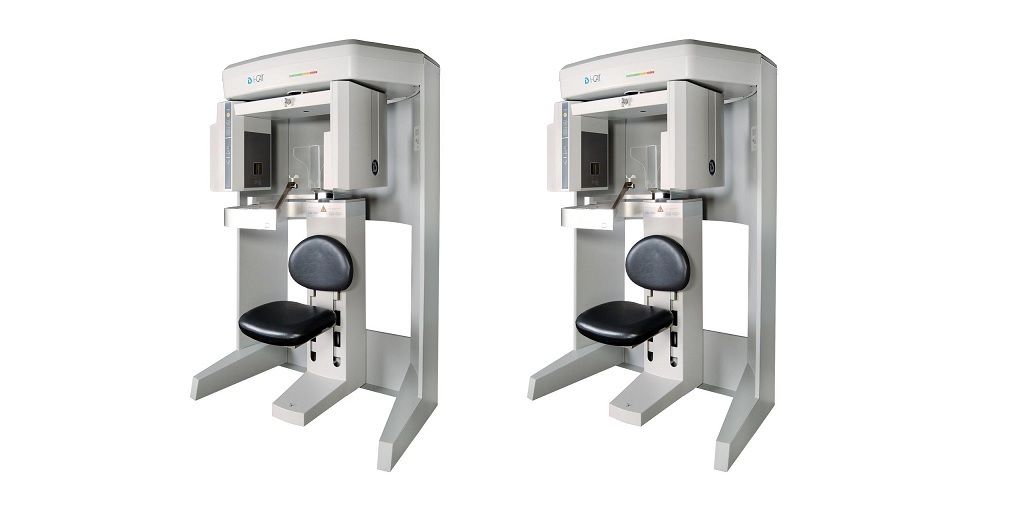
Full arch dental treatments, such as full-arch implant-supported restorations, All-on-4 treatments, and full mouth rehabilitations, have become increasingly popular.
These comprehensive solutions offer a long-lasting and aesthetically pleasing option for patients with missing or severely damaged teeth. However, the success of these complex treatments relies heavily on precise planning and execution. This is where dental cone beam CT technology becomes a vital tool for dental professionals.
Dental CBCT provides three-dimensional imaging that allows for more accurate diagnosis, planning, and surgical execution in full arch treatments. This article explores the role of CBCT in full arch dental treatment, detailing its role in precise treatment planning and outcomes.
The Role of CBCT in Full Arch Treatment
1. Accurate Diagnosis and Case Assessment
The first step in full arch treatment is a comprehensive diagnosis and case assessment. CBCT scans provide a detailed, three-dimensional view of the patient’s bone structure, teeth, and soft tissues. This is critical for identifying the patient’s overall oral health, bone density, and any anatomical challenges, such as impacted teeth, nerve pathways, or sinuses that may affect the placement of implants.
With traditional 2D X-rays, critical details like bone thickness or the proximity of vital anatomical structures could be missed. CBCT’s 3D imaging allows for a more accurate diagnosis, leading to better-informed decisions on whether the patient is a good candidate for full arch implants.
2. Precise Implant Planning
One of the most significant advantages of using CBCT for full arch treatment is the ability to plan dental implant placement with precision. Implant-supported full arch treatments rely on the correct positioning of implants to ensure the longevity and stability of the prosthesis. CBCT imaging helps dental professionals visualize the exact location of nerves, sinuses, and bone structure, allowing them to determine the ideal angle, depth, and position for each implant.
- Bone Assessment: CBCT can accurately measure bone density and volume, crucial for determining whether the patient has enough bone to support implants. In cases of bone deficiency, CT exams assist in planning bone grafts or other surgical interventions.
- Implant Positioning: By using CBCT, clinicians can create a 3D surgical guide that ensures the precise placement of implants. This reduces the risk of complications such as nerve damage, perforation, or improper placement, leading to more predictable and successful outcomes.
3. Guided Surgery for Increased Precision
Dental CBCT data can be integrated with computer-aided design (CAD) and computer-aided manufacturing (CAM) technology to create surgical guides. These guides ensure that implants are placed at the exact location, angle, and depth planned during the treatment planning phase. Guided surgery improves the precision of implant placement, reduces surgical time, and minimizes the risk of human error.
For full arch treatments like All-on-4, this precision is particularly important. Since the prosthetic arch is supported by only four implants, precise placement is critical to the stability and success of the treatment.
4. Reduced Risk of Complications
Full arch treatments can be complex, and the margin for error is small. CBCT significantly reduces the risk of complications by providing a detailed view of the patient’s anatomy. This allows clinicians to avoid critical structures such as nerves and sinuses during surgery. For patients requiring bone grafting, CBCT enables accurate planning of the graft location and ensures that the procedure is performed with minimal risk.
Additionally, post-operative complications, such as implant failure or infection, can often be attributed to inaccurate planning or placement. CBCT’s precision helps minimize these risks, leading to better long-term outcomes.
5. Post-Operative Assessment and Monitoring
Dental CBCT is also useful for post-operative assessment and monitoring. After placing the implants, CBCT scans can be used to evaluate the success of the procedure by checking for proper osseointegration (the process by which the implant fuses with the bone). The ability to monitor healing progress in 3D helps dentists identify any issues early on and take corrective action if necessary.
In cases where complications arise, CBCT can be used to assess the problem and plan any revision surgeries, ensuring the patient’s long-term success with their full arch treatment.
Getting Started with Dental CBCT for Full Arch? Word to the wise, save 30-50% with Renew Digital!
For over 10 years, Renew Digital has been the leader in certified pre-owned dental imaging equipment. They’ve helped thousands of dentists save big vs, new list prices on CBCT.
They have a wide inventory of CBCT, all from the leading brands dentists trust most – including Sirona, Planmeca, Carestream, i-CAT/DEXIS, Vatech and many more.
They back the quality of your pre-owned equipment through a rigorous system of testing and inspection, and then give peace of mind with their comprehensive parts and labor warranty so you can be sure the equipment they install will work safely and effectively for many years to come.
Reach a dedicated sales rep by calling Renew Digital at (888) 246-5611 or completing an online form on their website.
For more information about Sirona Cbct and Intraoral Scanners please visit:- Renew Digital, LLC